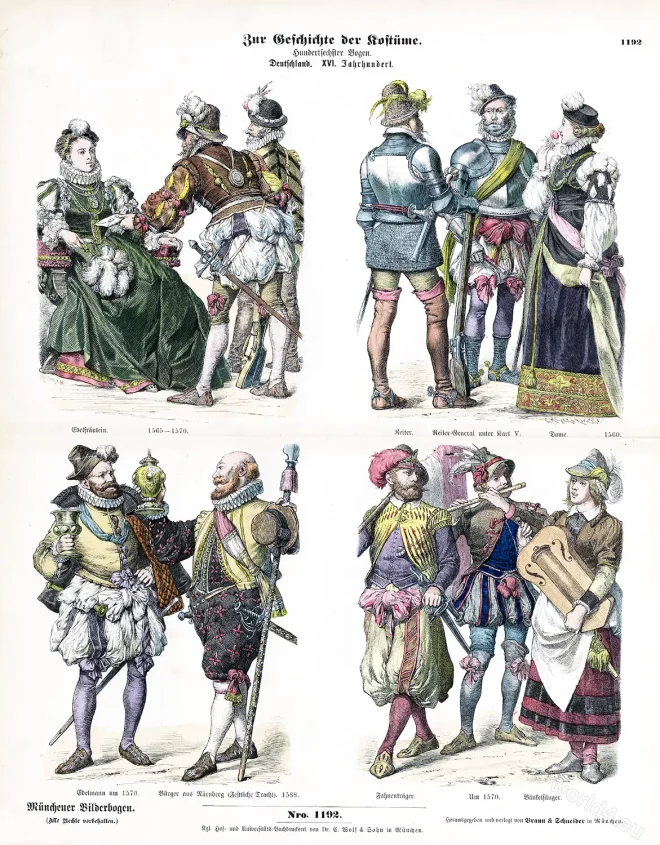Episcopal costume and insignia. The mitre, the cross, the superhumeral, the ring, the gloves, the shoes.
Category: Germany
Princess Alexandra Amalie of Bavaria (1826-1875).
Otto Wustlich: Portrait of Princess Alexandra of Bavaria (after an oil painting by J. Stieler).
German patricians in 14th century dress.
Münchener Bilderbogen 1848 to 1898. On the history of costumes.
Portrait of Queen Catherine Paulovna of Württemberg
Miniature portrait of Queen Katharina Paulowna (Romanova) of Württemberg c.1820, daughter of Paul I of Russia by Dietrich Jakob Christian Mathes.
The Portrait Miniature in Germany. Franz Napoleon Heigel.
Franz Napoleon Heigel. Portrait of his sister Henriette, c. 1835. German Biedermeier.
Clasp of Charles V, Holy Roman Emperor. 16th century.
Jewellery pendant of Charles V. This jewel exhibits a mass of precious stones. Renaissance craftsmanship
German Noblewoman and Noblemen 1565-1570.
German Renaissance Fashion between 1565 and 1570.
Sanssouci and Other Prussian Palaces by W. Howitt
Sanssouci Palace at Potsdam was the summer residence of Prussian kings and German emperors.
Castle of Thurnberg. Called also “The Mouse”.
Castle of Thurnberg is the most perfect of all the Rhenish castles. In sublimity of character, the feudal palace of Thurnberg is unequalled.
German Fashion between 1560 and 1590
German Renaissance fashion. Noblewoman, Noblemen. Citizen, Balladeer, Standard-bearer.










